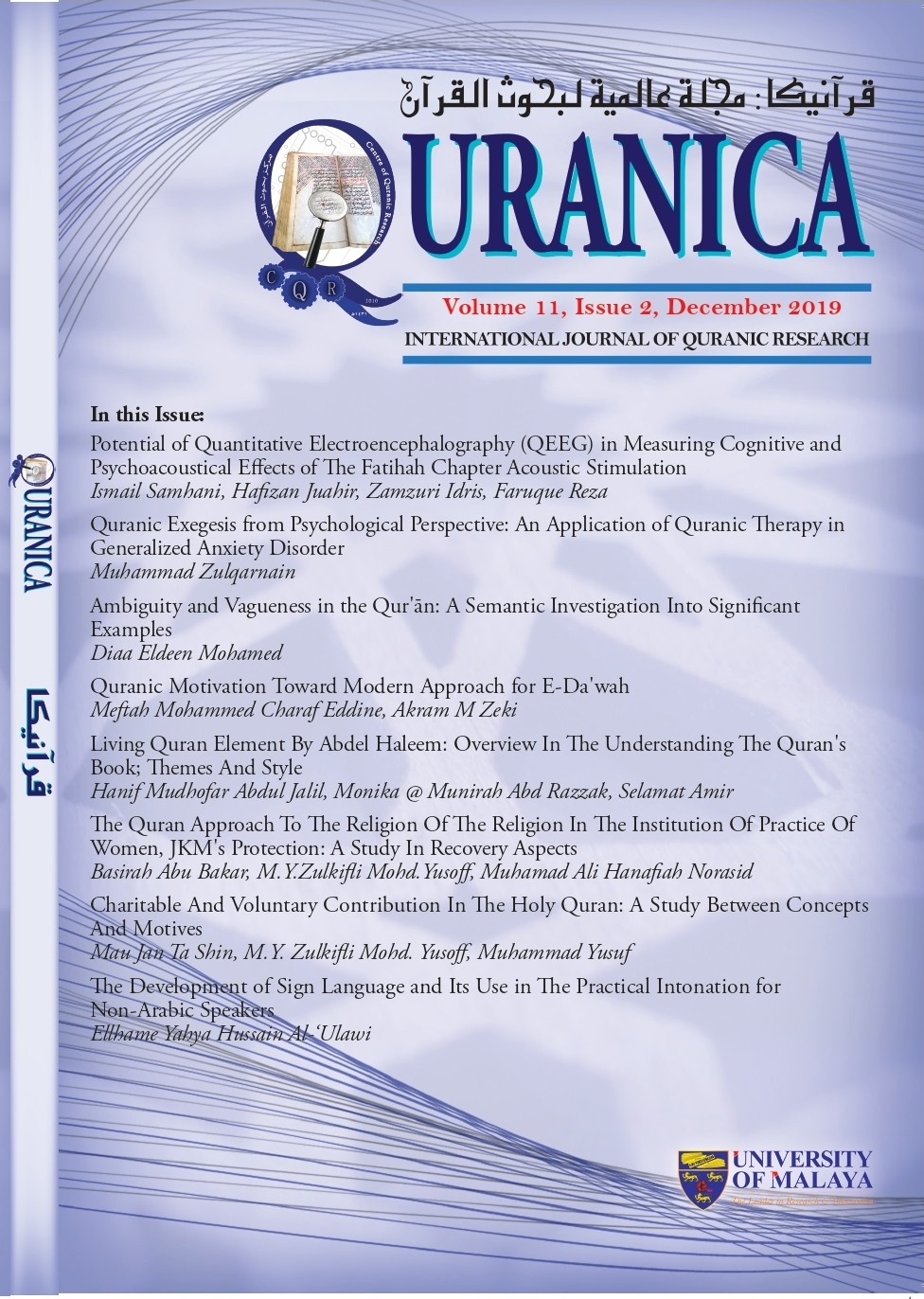Potential of Quantitative Electroencephalography (QEEG) in Measuring Cognitive and Psychoacoustical Effects of The Fatihah Chapter Acoustic Stimulation
Main Article Content
Abstract
The aesthetic experiences of Quranic recitation are receiving attention from scientific community. While the contribution of quantitative electroencephalography (qEEG) towards investigation of cognition especially language processing as well as psychoacoustical effects are abundant. Yet knowledge about the integration for these two domains are scarce, hence this powerful tool rarely applied in measuring the effects of its acoustic stimulation to listeners’ brain physiology and psychology. This study aimed to review the potential of qEEG in assessing cognitive and psychoacoustical effects of acoustic stimulation from Fatihah Chapter recitation - the first chapter of The Holy Quran, the Muslims book of guide. This review article found that qEEG serves highly potential neuroimaging information those might improve the interpretation of the Fatihah Chapter and even Quranic acoustic stimulation effects.
Downloads
Article Details
Disclaimer
QURANICA makes every effort to ensure the accuracy of all its contents. However, opinions, discussions, views and recommendations are expressed in this journal do not necessarily reflect the official policy of QURANICA or views of its editors or publishers. Therefore, QURANICA and its publishers will not be liable for any controversy may be arisen. The journal reserves the right, at its sole discretion, to change its terms and conditions of publications.
Copyright
It is a condition of publication that manuscript submitted to the journal have not been published, accepted for publication, nor simultaneously submitted for publication elsewhere. By submitting a manuscript, the author(s) agrees that copyright for the article is transferred to the publisher, if and when the manuscript is accepted for publication.
